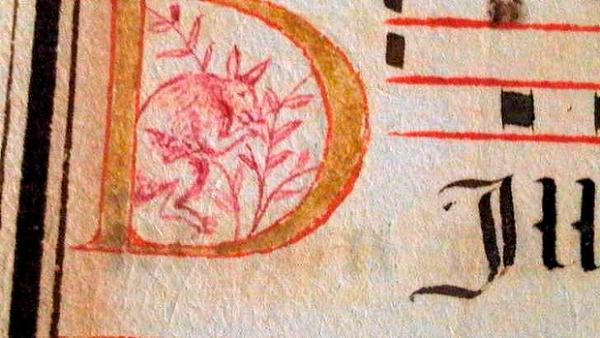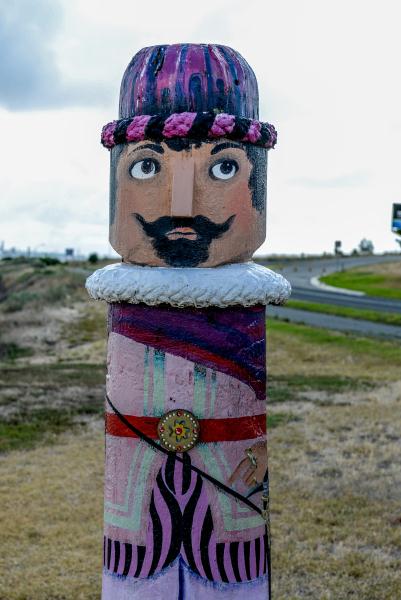
By NOEL MURPHY
NEW EVIDENCE suggesting European navigators discovered Australia in the 16th Century has added to conjecture over Geelong’s role in a secret Portuguese arrival.
A New York exhibition of European mediaeval liturgy music features a sketch dating between 1580 and 1620 of what appears to be a kangaroo or wallaby.
With Australia’s European discovery formally recognised as the arrival of Dutchman Wilhelm Janzsoon in 1606, the possible knowledge of kangaroos even earlier adds weight to claims the Portuguese arrived as early as the 1520s – and speculation they wintered in Geelong’s Corio Bay.
The curators of the Sacred Song exhibition, Laura Light and Susan Bonython, said the sketch was in a personal book, called a processional thought, originally owned by a Caterina de Carvalho.
“The manuscript includes pen-drawn initials of flowers and birds and animals, charming in their own right,” say curators of the “Sacred Song” the curators said.
“Close inspection of these initials, however, reveals a surprise, for among the flora and fauna there is a carefully drawn image of a kangaroo, or perhaps a wallaby; one of the earliest European depictions of this animal.
“This modest if delightful manuscript thus may contribute to a still-raging argument: Who discovered Australia – the Dutch or the Portuguese?
“In 1606 the first Dutch ship was sighted off the coast of Australia. But a set of 16th Century world maps appears to argue in favour of the Portuguese, suggesting that they predated the Dutch in the discovery by at least a half century.
“If our manuscript can be dated with some certitude, this book with its drawing of a kangaroo, as well as small male figures that do not look European in their dress and headgear, interjects another sort of evidence into the long-standing argument, one that argues clearly in favour of the Portuguese.”
Corio Bay has long been suggested as the 1522 wintering site of Portuguese explorer Cristovao de Mendonca. The late Geelong author Ken McIntyre raised the theory in his 1970s book, The Secret Discovery of Australia.
Mr McIntyre contended that Mendonca led three ships, including Warrnambool’s mysterious Mahogany Ship, along the east coast of Australia on a secret mission into what was then Spanish territory.
His theories had the support of evidence such as redrawn maps with an uncanny resemblance to the east coast and the discovery of strangely-shaped ancient keys deep in Geelong beach sand.







